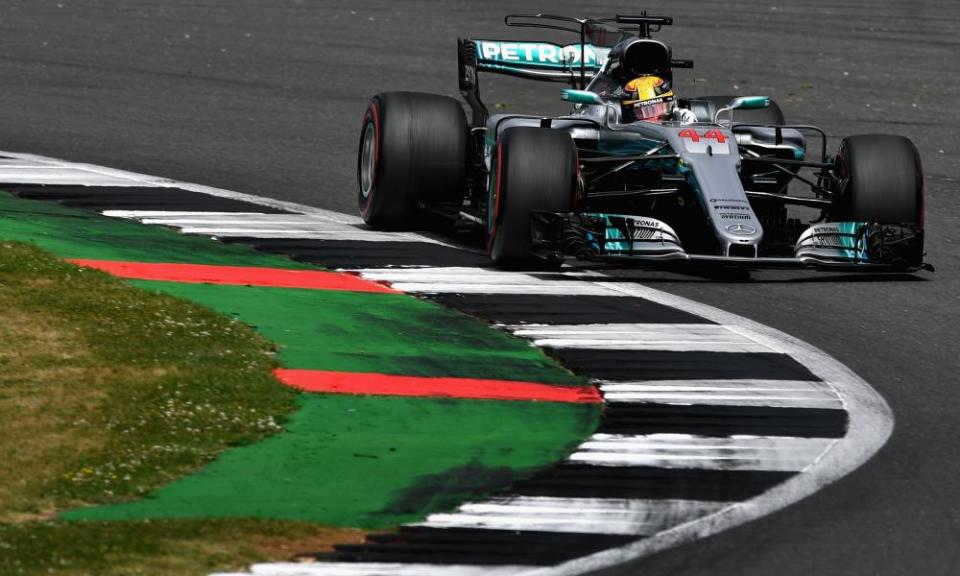FIA defends decision to enforce F1 halo cockpit protection device for 2018

The FIA has strongly defended its decision to impose the halo cockpit protector for the 2018 Formula One season. The sport’s governing body has received opposition from fans and the teams and criticism from leading participants in the sport but has on Saturday rigorously championed its position on safety grounds.
The decision to implement the halo, designed to protect drivers from head injuries, was announced after an F1 strategy group meeting last Wednesday where it is understood only one team supported its use. Some drivers have been opposed to its introduction from its inception. Lewis Hamilton originally described it as the “worst-looking modification” in F1 history. However he later supported it after the FIA showed that the halo increased the chances of surviving a crash by 17%.
The FIA has tried other cockpit protectors, including the aeroscreen and, most recently at the British Grand Prix, the shield, but the halo has undergone the most rigorous testing. However, Niki Lauda, Mercedes’ non-executive chairman, was highly critical. “We are trying hard with faster cars and getting closer to the spectators to attract new fans to the sport,” he said. “But this now is destroyed by an over-reaction. There is 100% a better solution than the halo. Otherwise we would not have tried three ideas. The halo destroys the DNA of an F1 car. The FIA has made F1 as safe as it gets.”
The FIA, however, has now responded, making an overwhelming case for safety over aesthetics. “Over the past decade motor sport has witnessed serious incidents that affected drivers,” the organisation explained. “The severity of the incidents made it clear to the FIA that developing a solution to mitigate against frontal impact in the area of the cockpit is a research priority for the FIA to address this existing weak point.”
That it is one of the areas where drivers are still at risk has been made clear in recent years. The FIA was testing cockpit protection when Dan Wheldon was killed at the Las Vegas Motor Speedway in October 2011. The British driver Justin Wilson was killed after he was hit by a piece of flying debris in an IndyCar race at the Pocono Raceway in 2015 and head injuries have long been of concern to the FIA, not least when Felipe Massa suffered a skull fracture after being hit by a spring during qualifying in 2009 in Hungary. That occurred two weeks after Henry Surtees, son of the former world champion John, was killed at Brands Hatch during a Formula Two race having been struck by a wheel that had broken free from another car.
In 2016 The Grand Prix Drivers’ Association asked the FIA president, Jean Todt, for some form of protection to be “implemented as swiftly as possible’’. The FIA continued testing a variety of devices and has now explained its adoption of the halo.
Tests revealed that in the case of car-to-car incidents the Halo was able to withstand 15-times the static load of the full mass of the car and was able “to significantly reduce the potential for injuries,” said the statement. “In car-to-environment tests it was established that the Halo was able to prevent helmet contact with a wall or a barrier in many cases, using a selection of previous incidents as a reference. Finally, in the case of external objects the Halo was found to successfully deflect large objects away from the cockpit environment and also demonstrated an increased net level of protection against small debris.”
All 10 teams ran the halo system at some point in 2016 so they have all experienced it but in contrast the shield – a transparent open canopy made of polycarbonate – has been tested only once, by Sebastian Vettel last week at Silverstone. He abandoned it after one lap complaining it had made him dizzy.
The FIA has made it clear that it would be resolute in pursuit of safety and since the deaths of Ayrton Senna and Roland Ratzenberger in 1994 has been successful in making the sport adapt for safety purposes. Only one driver, Jules Bianchi, has been killed on track in F1 since 1994.
Formula One’s race director, Charlie Whiting said in 2016: “Wearing a helmet is not voluntary. Hans [head and neck support] is not voluntary. So I can hardly imagine that we will make halo voluntary. In terms of safety, we will not compromise.”
The device has been tested to ensure drivers can be extricated safely and the design will be further developed this year by teams, drivers and FIA but the governing body was insistent that to ensure driver safety, it had to be implemented. “The halo system represents the best solution to the issue of frontal cockpit protection currently in existence,” the statement concluded.

 Yahoo Sport
Yahoo Sport 





































